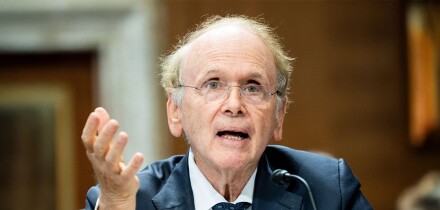Different regulation for securitized equity products throughout Europe has hindered the development of the sector and ensured a prominent role for the lawyers, according to Johan Grootheart, managing director and global head of structured product sales and origination at Deutsche Bankin London.
In the early nineties the major challenge for a structured product developer was to get the mathematics and pricing models right. This has fundamentally changed. Today the major challenge is to provide the optimal legal wrapping to offer it to as many investors as possible.
Initially investment banks were only capable of offering their risk management capabilities for structured products through over-the-counter products to the intermediary supported by International Swaps and Derivatives Association contracts. This substantially limited the clients they could deal with directly. Typically the investment bank would rely on an intermediary, asset manager or treasury, to re-wrap the product in a format that could appeal to a large end user group. From the perspective of the investment bank this was sub-optimal because they could not control the issuance agenda and the involvement of the intermediary created another layer of complexity and fees. In order to be able to target a larger final investor base directly, the next step for the investment banks was to develop a securitized product offering to wrap their own products as notes, certificates, warrants, exchangeables, reverse convertibles, etc. The latest development has been that structured product teams at investment banks have set up their own fund wrapping and life insurance capabilities, again in order to reach out directly to as wide as possible a client base. Fund management companies such as Lyxor from Société Générale and Xavex Advisors from Deutsche Bank have been set up with this purpose in mind.
Fragmented Market
One of the major obstacles for the development of global wrapping forms has been the differences in national legislation. Investment banks act global, regulators do not. Due to the innovative nature of structured products and the continuous emergence of new product types, regulators are often obliged to play catch-up.
Looking at securitized products, even within the European Union, the situation has emerged where listing and offering requirements differ from country to country. Mutual recognition on a pan-European level, as should exist for all securities listed on official stock exchanges, does not work properly.
This has hindered the development of a pan-European market for securitized products and creates a substantial problem for any European bank wishing to operate on a pan-European level. The results are clearly visible. In some European countries, securitized equity products are continuously priced more expensively than in other European countries. Standards for marketing material and client disclosure differ from country to country. Not only do the issuing banks need to translate all offering and marketing documents into the different languages, but the contents need to be rewritten to comply with local regulations.
The impact of such regulatory differences on the development of the market for structured products and derivatives is enormous. For instance, in both Italy and Spain no market for securitized products existed five years ago. Last year, the traded volume of securitized products in Italy was 19 times that of Spain, and the gap continues to increase year-by-year. This is a logical consequence of the different approach by the national authorities. Italian regulators ensured the creation of an efficient market harmonised with other European markets, whereas the Spanish authorities have taken a much more restrictive approach and have insisted on the segregation of their market from other European markets.
Pushing Forward
There is no real reason why structured product investors should get different information or different treatment based on country of residence. Nevertheless finding a European solution, let alone a global one, has proven to be very difficult. Trying to deal with the diversity of national regulations by adopting the highest standard is challenging, as the various national regulatory requirements are often incompatible with each other.
However, initiatives such as the Universal and Collective Investment Trust Schemes (UCITS) III directive, the new prospectus directive in Europe and the Commodities Futures Modernization Act 2000 in the U.S. are all steps in the right direction to create a regulatory framework which will make it easier to offer structured products to as large as possible client group on a harmonised basis. But until this is achieved structured product houses will continue to employ more lawyers than mathematicians. And looking at the current rate of progress, this promises to continue for a very long time.





